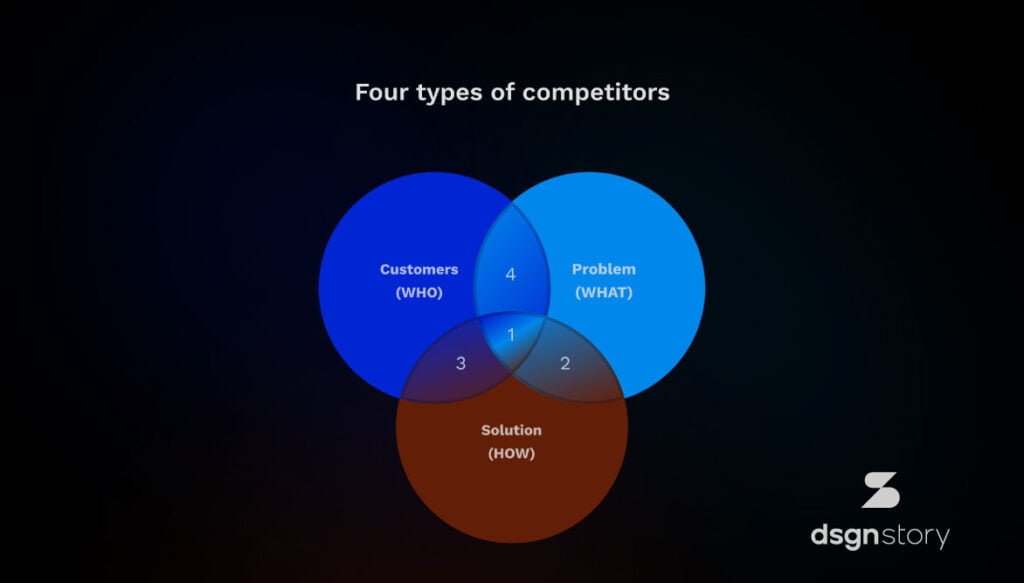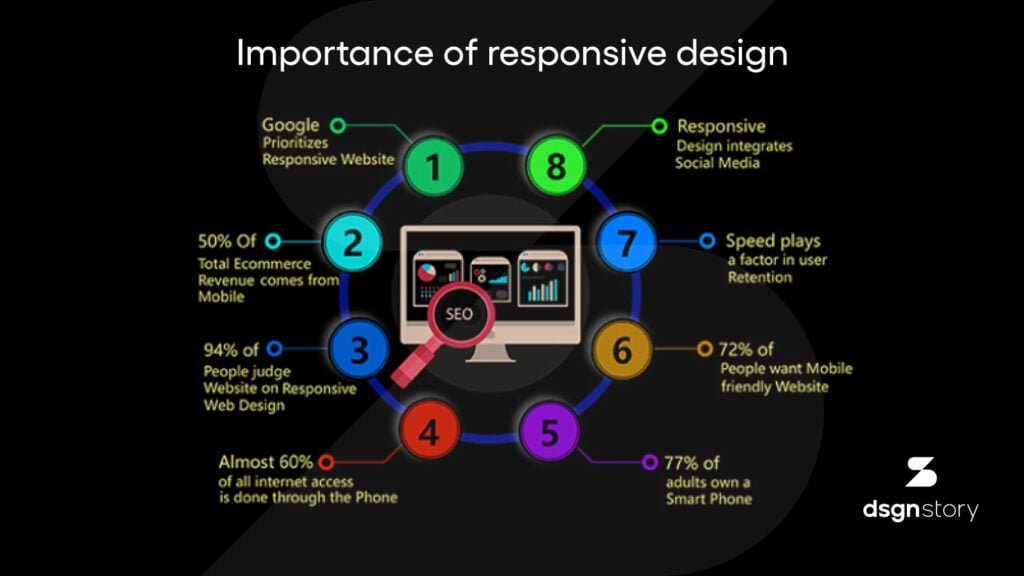A well-designed website plays a crucial role in helping small businesses thrive in today’s digital world. When it comes to designing a website for small businesses, it’s essential to understand the significant benefits it brings. In this article we will discover essential tips and strategies on How to Design a Website for Small Businesses to enhance online presence and drive success.
Firstly, it enhances the visibility of your business, making it easier for potential customers to find you online. With the right optimization techniques, your website can rank higher in search engine results, attracting more organic traffic.
Secondly, a well-designed website boosts your credibility and professionalism. It serves as a digital storefront, establishing trust with your audience and showcasing your products or services in an appealing way.
Lastly, a website provides a platform for customer engagement. By incorporating interactive elements and clear call-to-actions, you can encourage visitors to take desired actions, such as making a purchase or contacting your business.
| Benefits | Description |
|---|---|
| Increased Visibility | Improve search engine rankings and attract more potential customers online. |
| Enhanced Credibility | Establish trust and professionalism, making customers more likely to engage. |
| Improved Customer Engagement | Encourage interaction and guide visitors towards desired actions. |

Understanding the Needs of Your Small Business
A. Defining Your Goals and Target Audience
When designing a website for your small business, it’s crucial to start by clearly defining your goals and identifying your target audience. Your website should align with your business objectives and help you achieve specific outcomes. Whether it’s generating leads, increasing sales, or building brand awareness, knowing your goals will guide the design process.
To effectively cater to your target audience, it’s essential to understand their preferences, demographics, and behavior. Consider their age, location, interests, and online habits. By knowing what your audience wants and expects from a website, you can tailor your design and content to resonate with them, increasing engagement and conversions.

B. Conducting Competitor Analysis
One valuable step in designing your website is researching and analyzing competitor websites. This analysis provides insights and inspiration that can help you differentiate your own site.
By exploring your competitors’ websites, you can identify their strengths and weaknesses, allowing you to craft a unique online presence that stands out.
Make note of what makes your competitors successful. Is it their user-friendly navigation, compelling content, or eye-catching visuals? By understanding what works well for them, you can adapt those elements to suit your own business needs and improve upon their weaknesses.
This analysis serves as a foundation for creating a website that not only meets your business goals but also surpasses your competitors in terms of user experience and value.

Planning and Structure
A. Creating a Sitemap
When designing a website for small businesses, it is essential to start with a well-structured sitemap. A sitemap is like a blueprint that outlines the main sections and pages your website will have.
It helps organize your content in a logical hierarchy, making it easier for visitors to navigate and find what they are looking for. By including relevant keywords in your sitemap, search engines can better understand and index your website, improving its visibility in search results.
Think of your sitemap as a roadmap that guides both users and search engines through your website’s content.

To create a sitemap, first identify the key pages you want to include, such as Home, About Us, Services, Products, and Contact. Then, categorize and organize additional pages under these main sections.
Ensure that the hierarchy makes sense and reflects the natural flow of information. By creating a clear and well-structured sitemap, you provide a solid foundation for your website’s design and navigation, enhancing the overall user experience.
B. User-Friendly Navigation
User-friendly navigation is vital for small business websites, as it allows visitors to find information quickly and easily. To achieve this, design a clear and intuitive menu structure that prominently displays the main sections and pages of your website.
Use simple and descriptive labels for each menu item, using keywords related to your small business to improve search engine optimization.
In addition to the menu, consider incorporating a search feature on your website. This allows users to search for specific information or products, saving them time and effort.

When implementing a search feature, ensure it is prominently placed and easily accessible. Optimize the search functionality by including relevant keywords and providing accurate and comprehensive search results.
Remember, the goal of user-friendly navigation is to create a seamless browsing experience, enabling visitors to explore your website effortlessly. By employing clear menus and a convenient search feature, you enhance usability, engagement, and ultimately, the success of your small business website.
Content Creation and Optimization
A. Compelling Homepage Design
When it comes to designing a website for small businesses, your homepage plays a crucial role in capturing visitors’ attention. To make a strong first impression, focus on crafting an attention-grabbing headline that instantly communicates what your business is about. Keep it short, clear, and compelling, using keywords that reflect your industry and target audience’s needs.
For example, if you’re a local bakery, a headline like “Delicious and Freshly Baked Treats for Every Occasion” would resonate with potential customers searching for baked goods. Additionally, include a concise value proposition that highlights the unique benefits your business offers, such as free shipping, personalized service, or competitive pricing.
To further enhance the user experience, incorporate relevant visuals throughout your homepage. Images and videos can create a visually appealing and engaging experience, allowing visitors to connect with your brand on a deeper level. For instance, if you own a landscaping company, showcase high-quality photos of beautifully manicured gardens or before-and-after transformations.
These visuals not only demonstrate your expertise but also help potential customers envision the value you can bring to their own spaces. Remember to use alt text for your images, describing them with keywords, such as “professional landscaping services” or “lush garden design.”

B. Creating Informative and Engaging Pages:
While the homepage grabs attention, the rest of your website’s pages should provide informative and engaging content that effectively communicates your message. Write clear and concise content that is easy to understand, avoiding technical jargon that might confuse your audience.
Break down information into digestible sections using subheadings (H2) to make it skimmable and user-friendly. This helps visitors quickly find the information they’re looking for and encourages them to explore further.
In addition to well-crafted text, incorporate visuals strategically on your pages. Images and videos can enhance the user experience and make your content more engaging. For instance, if you’re a fitness trainer writing about different exercise routines, include instructional videos or animated illustrations to guide readers through the movements. Visuals not only make your content more enjoyable but also aid in conveying information more effectively.
C. On-Page SEO Optimization:
To improve your website’s visibility in search engine results, it’s important to optimize your content for relevant keywords. Conduct thorough keyword research to identify terms and phrases that potential customers are searching for in your industry.
Incorporate these keywords naturally throughout your website’s meta titles, descriptions, headings (H1, H2, H3), and URL structures. For example, if you run a pet grooming service, consider using keywords like “professional pet grooming,” “dog grooming tips,” or “cat grooming services” in your titles and headings.
Remember that optimization should be done in a way that benefits both search engines and human readers. Avoid overstuffing keywords, as it can negatively impact readability and user experience.
Focus on creating valuable, informative content that answers users’ questions and meets their needs. By aligning your website’s content with relevant keywords, you increase the chances of attracting organic traffic and ranking higher in search engine results.

Visual Design and Branding
A. Choosing an Appropriate Theme or Template
When designing a website for small businesses, it is crucial to choose a theme or template that aligns with your brand identity and business goals. The theme you select should reflect the personality and values of your business, helping you connect with your target audience effectively.
Additionally, it is essential to ensure that the chosen theme is responsive and mobile-friendly. With more and more people accessing the internet through their smartphones, having a website that looks great and functions well on mobile devices is essential.
A responsive design will automatically adjust the layout and elements of your website to provide a seamless browsing experience across different screen sizes.
B. Consistent Branding Elements
To create a strong and memorable brand presence, incorporate your logo, colors, and typography consistently throughout your website. Your logo serves as the visual representation of your business and should be prominently displayed on your website.
Choose a color scheme that complements your brand and use it consistently across different sections of your website. Consistency in typography, such as font styles and sizes, ensures a cohesive visual experience for your visitors.
By maintaining a consistent branding approach, you enhance brand recognition and build trust with your audience.
| Branding Element | Usage throughout the website |
|---|---|
| Logo | Displayed prominently on every page |
| Colors | Consistently used in backgrounds, text, and elements |
| Typography | Uniform font styles and sizes for headings and content |

Mobile Responsiveness and Performance
A. Responsive Design:
In today’s digital age, it’s essential to design a website that can adapt seamlessly to various screen sizes and devices. This is known as responsive design, and it ensures that your website looks great and functions properly whether it’s viewed on a desktop computer, tablet, or mobile phone.
By implementing responsive design, you provide an optimal user experience to all visitors, regardless of the device they use. With more people accessing the internet on their smartphones, it’s crucial to make sure your website is mobile-friendly and easy to navigate.
This way, potential customers can easily browse your site, find the information they need, and engage with your small business.

B. Optimizing Website Speed:
When it comes to website performance, speed matters. Slow-loading websites can frustrate visitors and lead to high bounce rates. To ensure a smooth and speedy user experience, it’s important to optimize your website’s speed.
One way to achieve this is by minimizing file sizes, including images, so that they load quickly without sacrificing quality. Compressing files and enabling caching are additional strategies to improve overall performance.
By implementing these speed optimization techniques, you can enhance user satisfaction, keep visitors engaged, and increase the likelihood of conversions. Remember, a fast and efficient website is key to providing a positive user experience and staying competitive in the online marketplace.

How to Design a Website for Small Businesses
In conclusion, designing a website for small businesses is a vital step in establishing a strong online presence. By following the key steps outlined in this guide, small business owners can create a website that effectively showcases their products or services.
It starts with understanding the goals and target audience of the business. Conducting competitor analysis helps identify unique aspects to set your website apart. Planning the structure and navigation of the website ensures easy access to information.
Compelling content creation and optimization using relevant keywords boosts visibility on search engines. Visual design and branding elements enhance the overall user experience. It’s crucial to ensure mobile responsiveness and optimize website speed for a seamless browsing experience.
However, the work doesn’t end there. Ongoing maintenance and updates are crucial for the website’s optimal performance. Regularly updating content, monitoring analytics, and addressing any technical issues are essential.

It’s important to stay up-to-date with industry trends and continually improve the website to meet the evolving needs of your target audience. By taking action and investing time and effort into creating a professional online presence, small business owners can attract more customers, build credibility, and ultimately achieve success in the digital landscape.
| Key Steps in Designing a Website for Small Businesses |
|---|
| 1. Define goals and target audience |
| 2. Conduct competitor analysis |
| 3. Plan website structure and navigation |
| 4. Create informative and engaging content |
| 5. Optimize content for search engines |
| 6. Choose an appropriate theme or template |
| 7. Incorporate consistent branding elements |
| 8. Ensure mobile responsiveness and speed |
| 9. Maintain and update the website |
Remember, your website is a powerful tool that can significantly impact the success of your small business. By implementing these steps and staying proactive in maintaining and improving your website, you can create a professional online presence that attracts customers and helps your business thrive in the digital world.